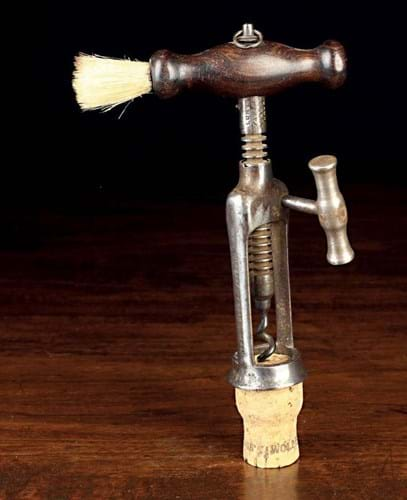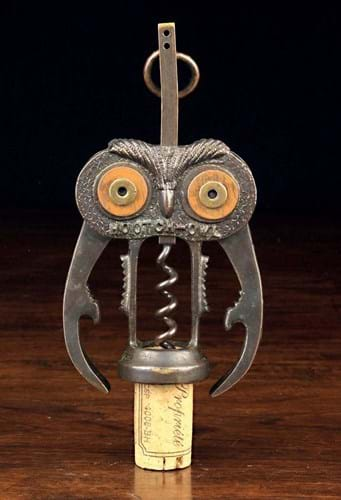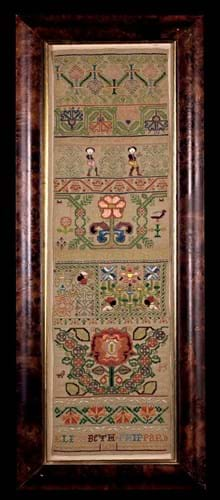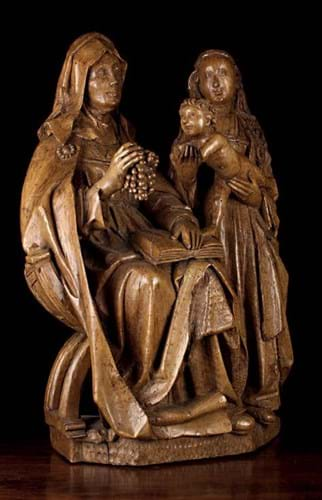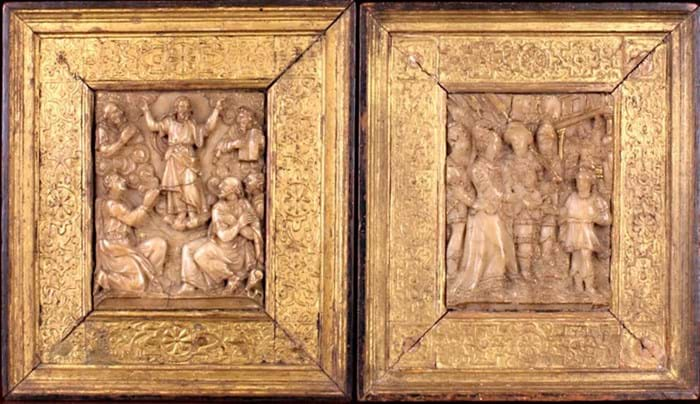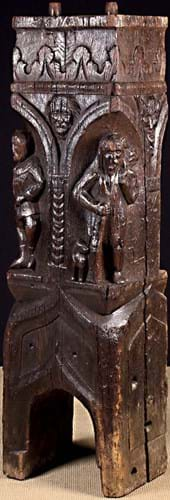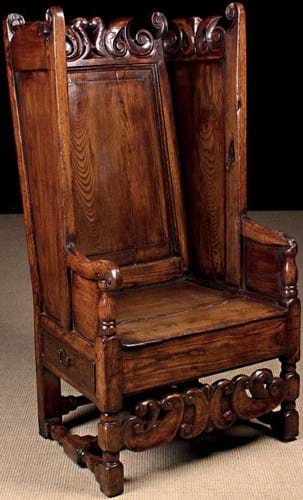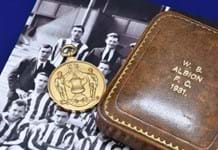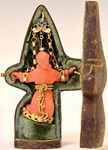This large assemblage of over 800 lots had no shortage of choice for buyers, whether your tastes were for early oak furniture, religious carvings, samplers, tapestries, 17th and 18th century portraits, treen or iron lanterns and coffee grinders.
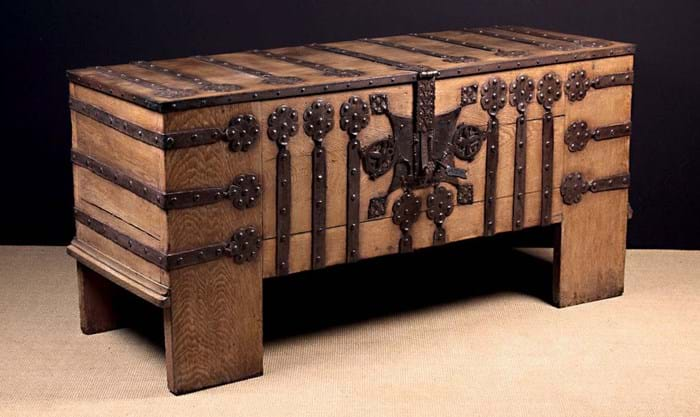
A number of chests and coffers were offered in the Wilkinson’s sale. This large 5ft 7in (1.7m) wide 16th century continental Westphalian example known as a Stollentruhe was one of the most expensive, selling just under the lower end of the £8000-12,000 guide at £7200. It was bound with decorated iron straps and an ornamental lockplate as well as pierced quatrefoil motifs to the corners.
Eye-opening prices
The corkscrews opened the sale. In all, not far short of 300 lots were on offer at the auction on December 2-3, a mix of single examples and group lots. Plenty of these sold for three- or even two-figure sums but there were a couple that made it to four figures.
The rack and pinion corkscrew was a 19th century version by the well-known London maker Thomas Lund which was marked Lund Maker Cornhill London and Fleet Street to the frame and Lund’s Patent London Rack below the turned wooden handle. This easily overshot its £150-250 guide to take £1980.
The other high-flyer was an American double-lever corkscrew known as The Hooch Owl, resembling, as the illustration shows, the form of an owl. A design patented in 1936 by Richard Smythe and marked Hooch Owl to the main body under the ‘eye’ screws, the levers can also serve as bottle grips.
A rare example, as the estimate of £800-1200 suggested, it ended up selling for £2200.
Quaker sampler
The auction’s highest price came from the section devoted to samplers and was an early specimen: a Quaker band sampler dated 1695 worked by Elizabeth Phippard in silk on a linen ground. Estimated to make £4000- 6000, it more than doubled that guide to take £12,500.
Elizabeth was born to Quakers John and Dorothy Phippard (nee Toms) in Olaves, Southwark, London on November 27, 1681, and died a spinster in 1757 aged 77.
Quaker samplers, those that were worked by young girls of Quaker religion and/or educated in Quaker institutions, are a particular collecting sub-set. This example, measuring 2ft 9½in x 9½in (86 x 24cm), was of the type known as a band sampler, a style favoured in the 17th century, worked here with 13 vari-sized horizontal bands of embroidered decoration.
As well as its desirable early date, this sampler incorporated an attractive range of diverse subjects from the floral (large roses and pansies) to the figural (two boxer figures dressed in striped tunics and breeches). It was also notable for its almost pristine condition; the floss silks retaining their bright colours.
Continental carving
A section devoted to early sculpture and works of art featured a number of Continental pieces: notably a Low Countries carving from Brabant dated to the 16th century and measuring 2ft 8in (82cm) in height.
This depicted St Anne seated with a book in her lap, holding a bunch of grapes (symbolising the blood of Christ) in her hand with the Virgin Mary alongside her holding the Christ Child. It came with hopes of £14,000-18,000 but ended up selling for less at £9600.
But there was more interest than predicted for a pair of small 5 x 4in (13 x 10 cm) carved and gilt highlighted alabaster reliefs from Malines/Mechelen dating from c.1600, set in elaborate strapwork decorated frames, that ended up taking £6100 against a guide of £4500-5000.
English alabasters dominated the market at home and across Europe from the 12th to the 16th centuries until Protestant Reformation put an end to this profitable trade.
At this point a thriving production grew up in the southern Netherlands around Mechelen featuring many of the same subjects found on English pieces.
One of Wilkinson’s alabasters was carved with a classical mythological scene of Dido receiving Aeneas and Cupid disguised as Ascanius and was signed with initials for Jan or Hans Verbeke. The other showed the Resurrection of Christ.
Pillar of sale strength
A large piece of early English oak carving in the sale took the form of a square section interior pillar measuring 4ft 10in (1.5m) in height, 16in (41cm) wide and 13in (41cm) deep. Dated to the late 15th/early 16th century, it was boldly carved from heartwood and featured a capital with raised foliate lappets set over a central mask of Christ with devil masks either side.
These were in turn set over arched corner niches displaying a jester to one side and St Roch with a dog to the other. The pillar stood on a niched ogee arched base which retained some traces of residual polychrome. Bidders evidently warmed to this piece of English carving – the guide was £2500-3500 but it was hammered down for £5100.
Among the large selection of early English vernacular furniture a notable price was achieved for a rare 3ft 9in (1.1m) high elm lambing chair which was dated to the late 17th century. This had a boldly carved cresting and front rail composed of broken and pierced S scrolls and an enclosed panel back and side panels as well as a side opening drawer to the box seat. Estimated at £1400- 1800, it finally sold for £6500.
Another 17th century oak top-seller at £5400 was a 4ft 2in (1.28m) wide joined oak credence table dated to c.1620, its demi lune fold-out twin leaf top opening out to near circular dimensions via a swing-out gate leg support. The carved and scallop edged arcaded frieze featured a drawer to the centre and the baluster legs were joined by a platform base.


